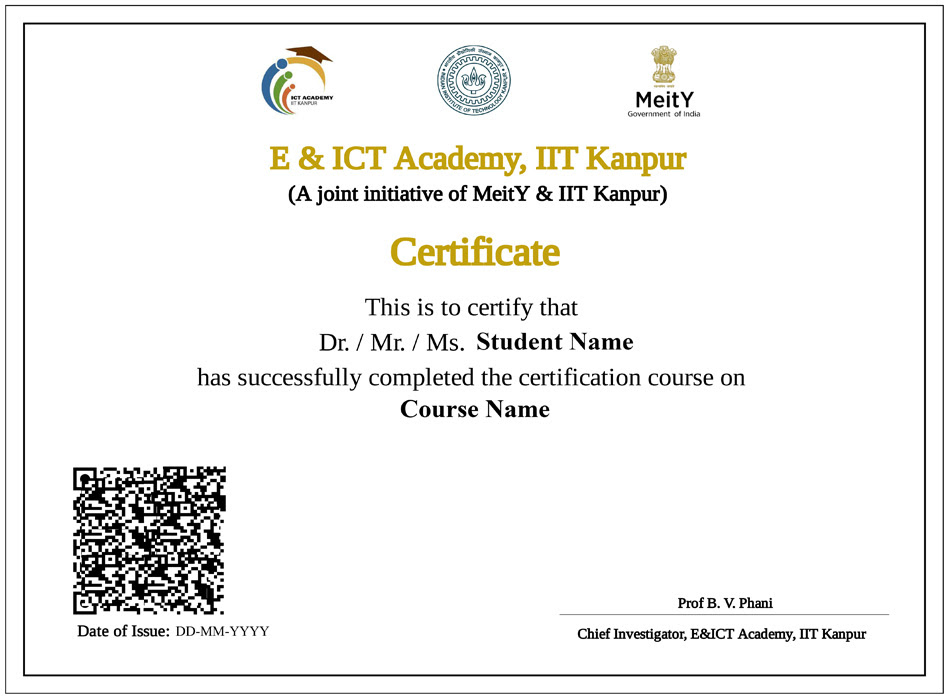Python for Data Science
Master Python Programming for Data Science, AI, ML, and Deep Learning Applications
- Certificate of Completion and Project Letter from E&ICT Academy, IIT Kanpur upon course completion.
- 120 hours of comprehensive training: 60 hours of live online sessions and 60 hours of assignments.
- Hands-on experience with real-world data science projects and applications.
Select Mode:
Beginner Level
Hybrid Mode
1 Month
What you'll learn
- Fundamentals of Python programming and its applications in data science.
- Data manipulation and analysis using NumPy and Pandas.
- Data visualization techniques with Matplotlib.
- Data preprocessing, cleaning, and exploratory data analysis (EDA).
- Working with APIs and web scraping using BeautifulSoup.
- Implementing a capstone project involving data analysis using Python.
Skills you'll gain
Tools



Earn a career certificate
Add this credential to your LinkedIn profile, resume, or CV. Share it on social media and in your performance review.

Learn from Industry Experts
Gain insights from seasoned professionals with real-world experience in data science and Python programming.
Hands-On, Project-Based Learning
Apply concepts through practical exercises and a capstone project to build real-world data science applications.
Live Online Sessions
Engage in live instructor-led sessions designed for interactive learning and immediate feedback.

